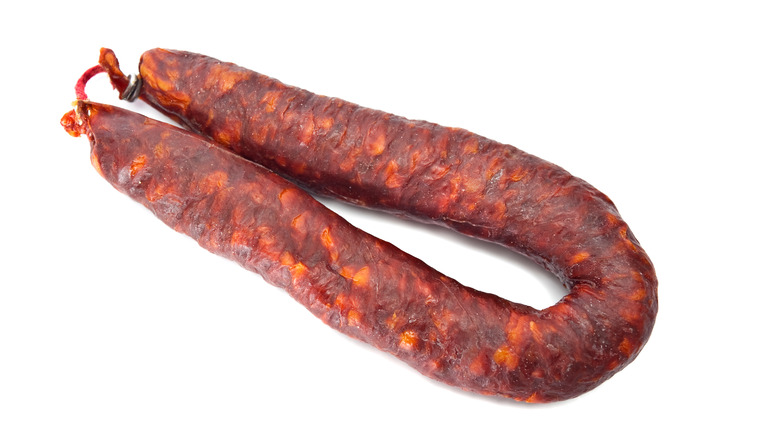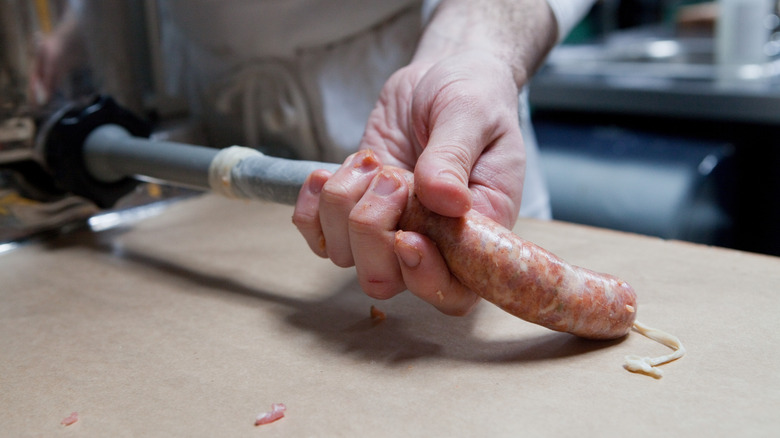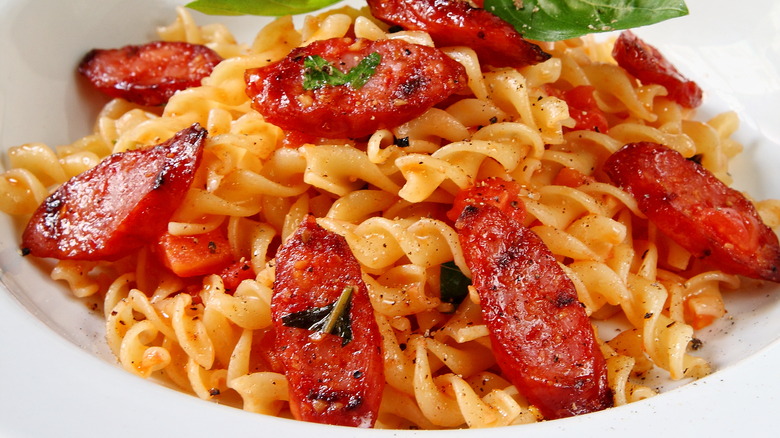The Aromatic Spice That Makes Argentina's Longaniza Sausage Unique
Sausages encompass a dizzying amount of variations — after all, there are loads of ingredients that can be stuffed into a casing. Such malleability lends the food to a multitude of regional renditions. Take longaniza — a sausage originating in Spain that is now found throughout Latin America, the Caribbean, and the Philippines. Prepared with everything from orange juice, chicha, and even tuna, an enthralling range of recipes are encompassed by the ingredient.
In Argentina as well as Uruguay, longaniza is defined by the addition of dried anise seeds. The spice lends the sausage a sweet, aromatic flavor that's less spicy than other Latin varieties. The long, pork-based sausage is often cured and dehydrated, which means it doesn't need to be cooked before being included in meals and even makes for a tasty appetizer. However, it's also sold in raw versions, which benefits best from a wood-fired grill. With a delightful flavor that is not hard to find good pairings for, Argentine Longaniza is a sausage worth seeking out.
What's in longaniza?
At first glance, longaniza may seem to have a lot in common with chorizo. With their red color and cured consistency, the two sausages do share attributes; however, the ingredients evince longaniza's unique nature. For starters, the sausage reaches for a different cut of pork — specifically, ground shoulder. This fatty cut provides a unique texture that's particularly smooth. To amplify the fat content, some producers add pork belly to the mix, as well as beef for flavor.
Anise seeds are the key component that distinguishes longaniza, which are finely ground to distribute the flavor throughout the sausage. Another essential ingredient — present in longaniza variants even outside of Uruguay and Argentina — is garlic. The vegetable adds a comforting earthy note to the mix, and to achieve a cured consistency, a special medley of salt, sugar, and agents like sodium nitrate are commonly added as well. Other ingredients may differ among producers; for example, some use wine for a splash of acidity, while others reach for vinegar. The same applies to spices; flavorings can include allspice, nutmeg, black peppercorns, bay leaf, paprika, red pepper flakes, and more.
How longaniza is eaten
Cured longaniza can be a dish all its own — cut up and served as an appetizer before a meal. You could also pair it with crackers, Proveleta, and a glass of Argentine wine for a themed charcuterie board when entertaining. It can also be enjoyed as a filling for a sandwich and is commonly done so in the famous Choripán. The neighboring Chile puts a spin on the Choripán by adding mayo, and they are also known to craft a tasty breakfast of scrambled eggs with the sausage.
While a delicious side star, longaniza can also be the focal point of dinner. Its flavor melds beautifully into pasta, especially one paired with a tomato sauce. Or the uncured version comes alive when smoked and served alongside Argentine classics — chimichurri and mustard. No matter how you slice it, longaniza's palatable anise flavor is a welcome component to a meal.


